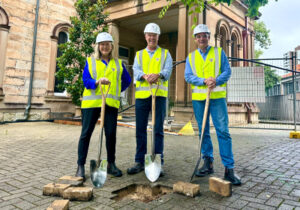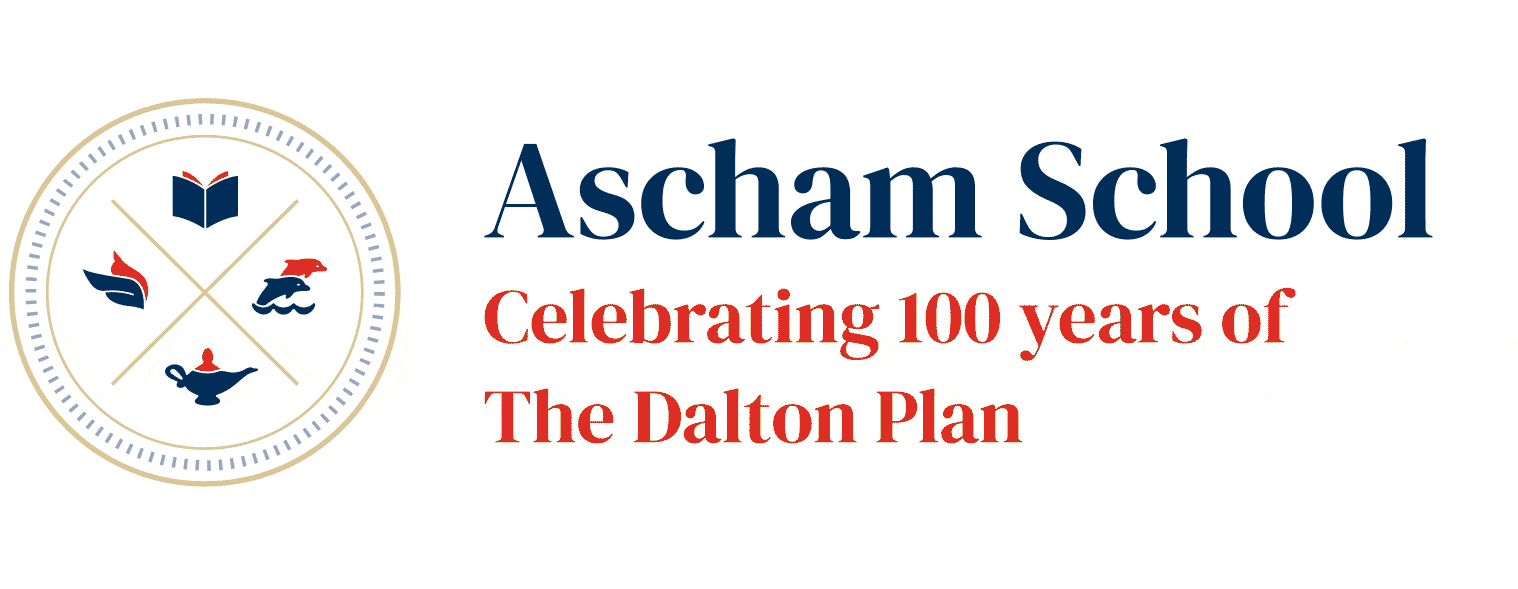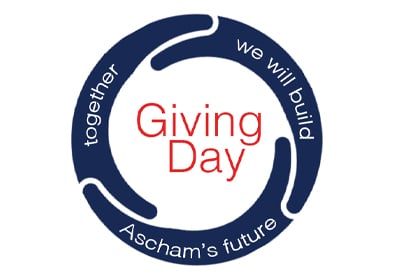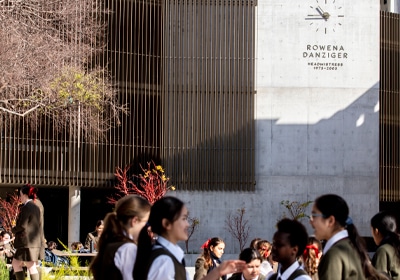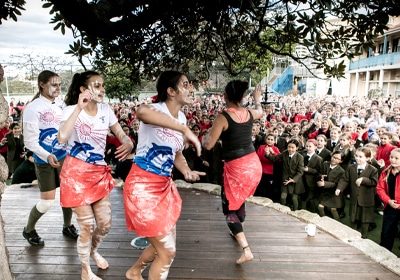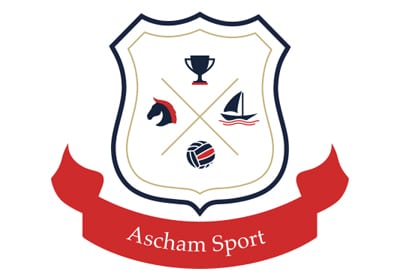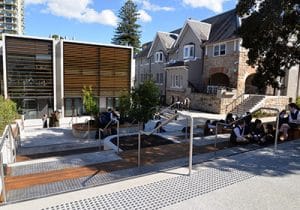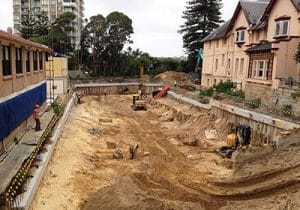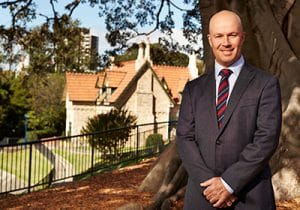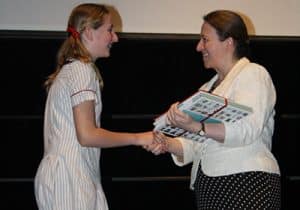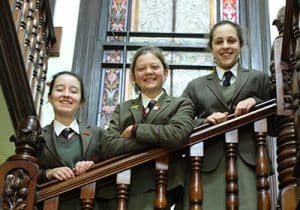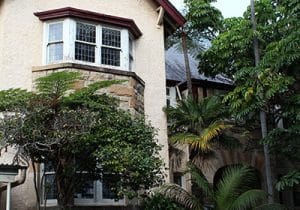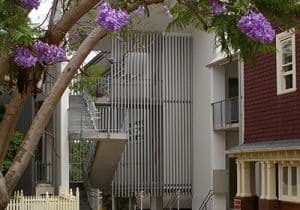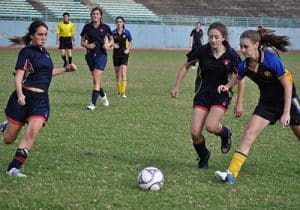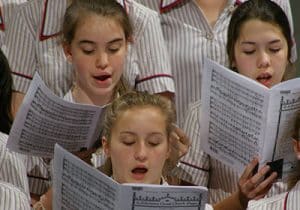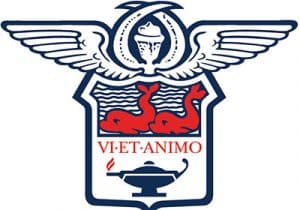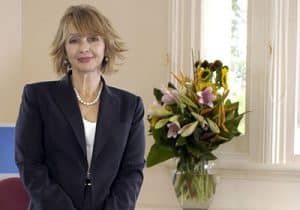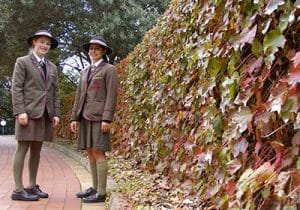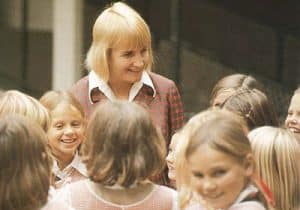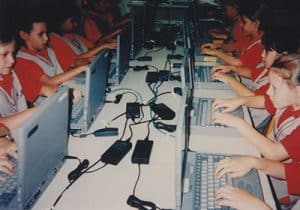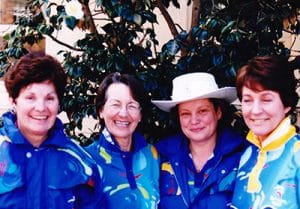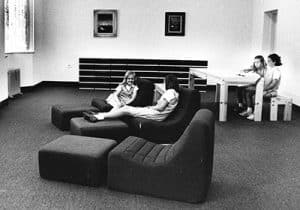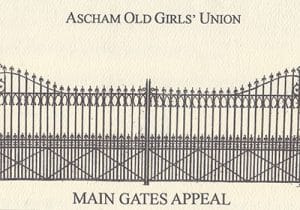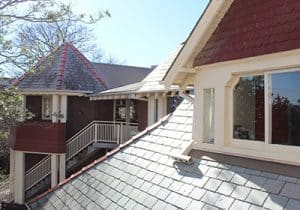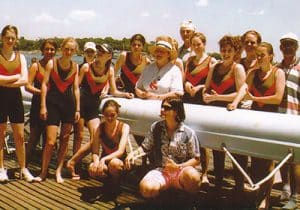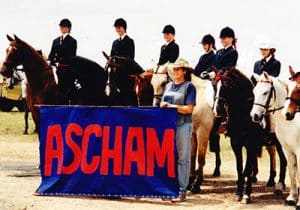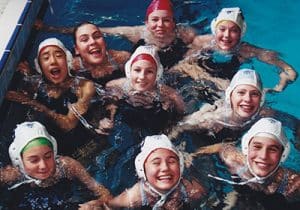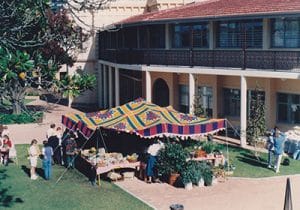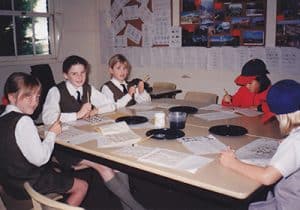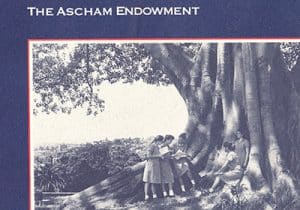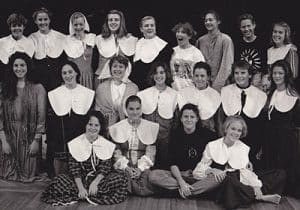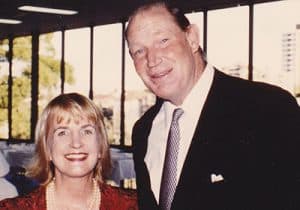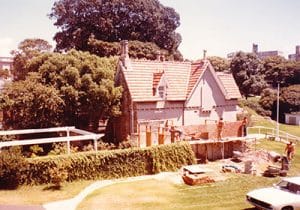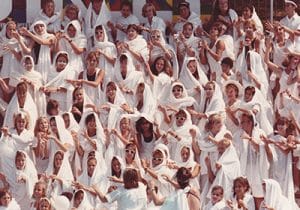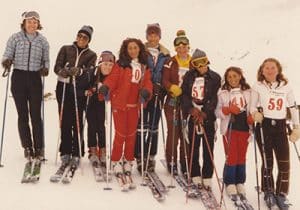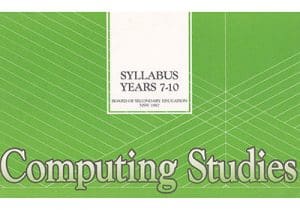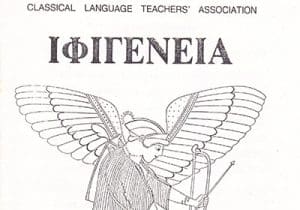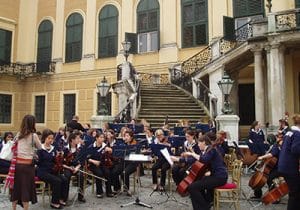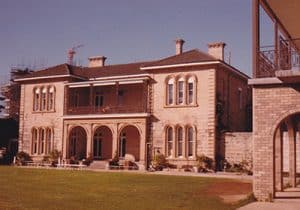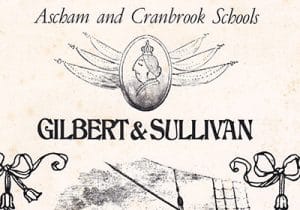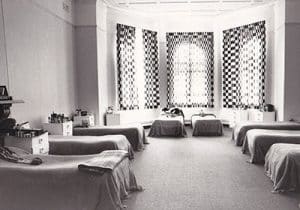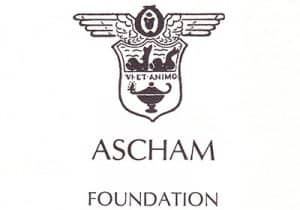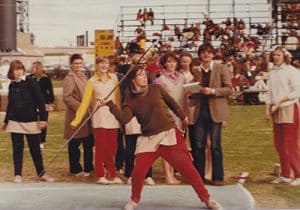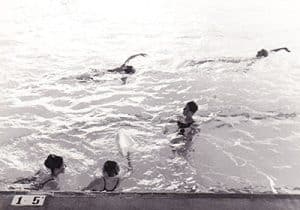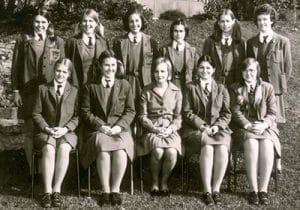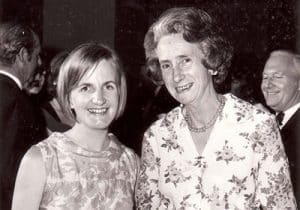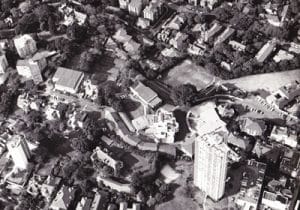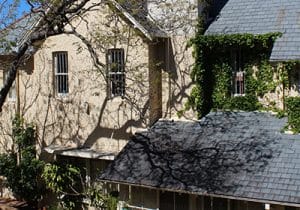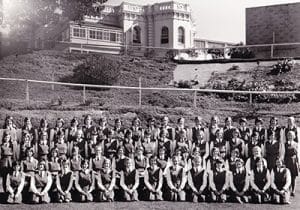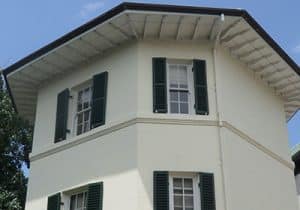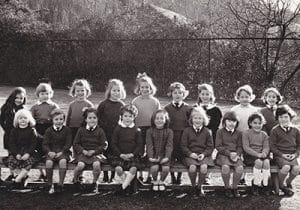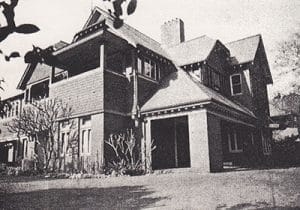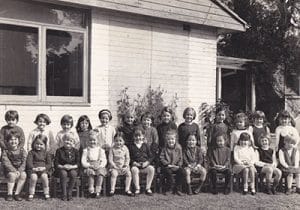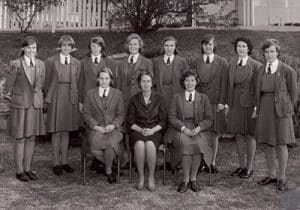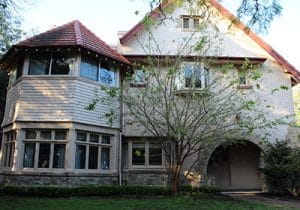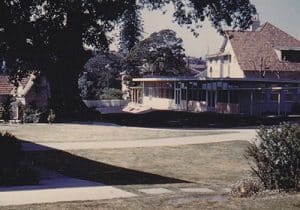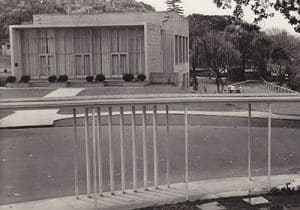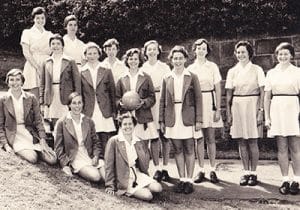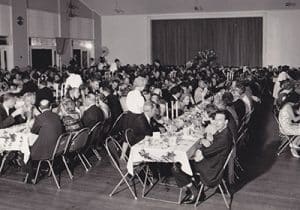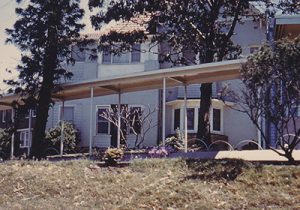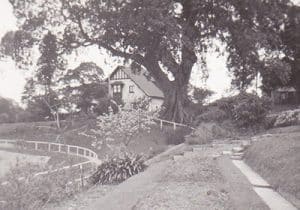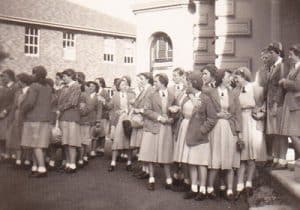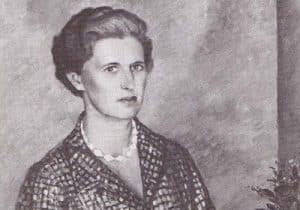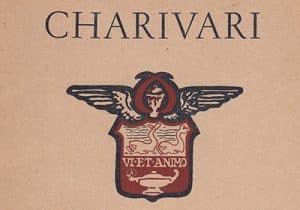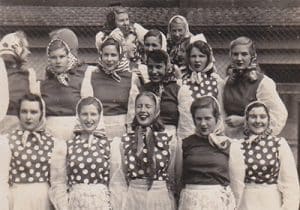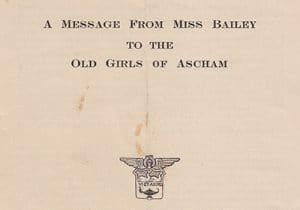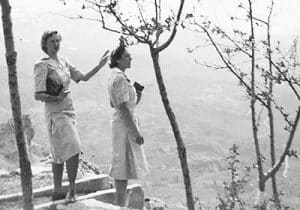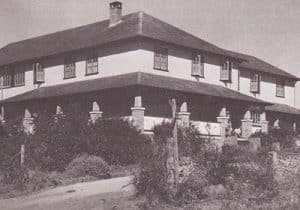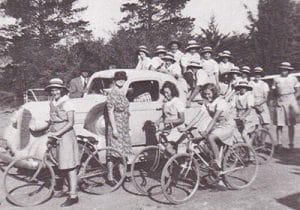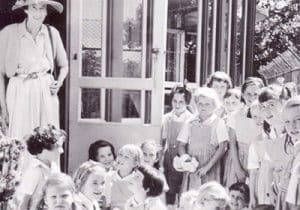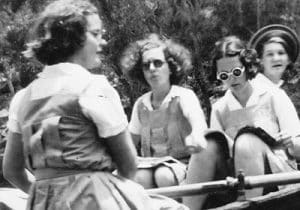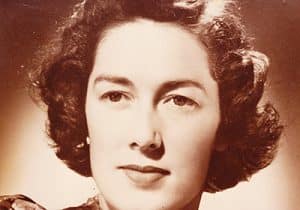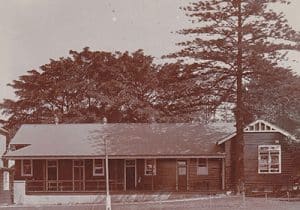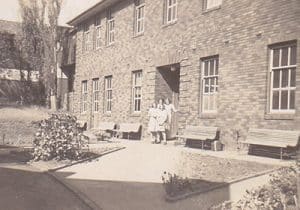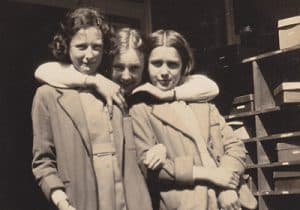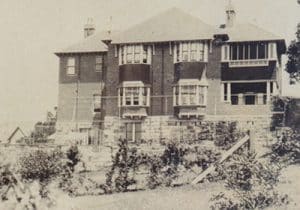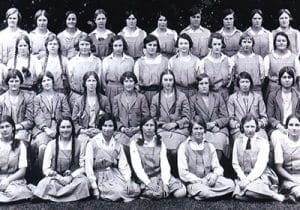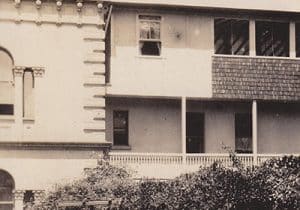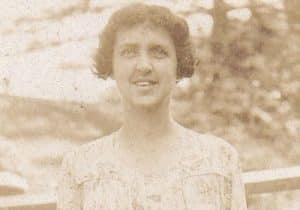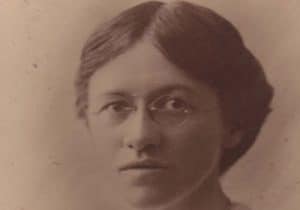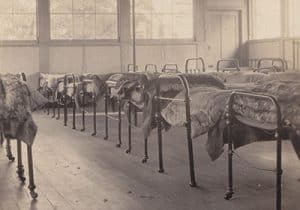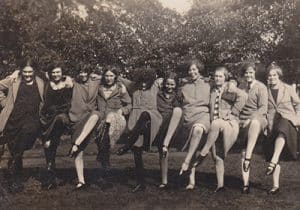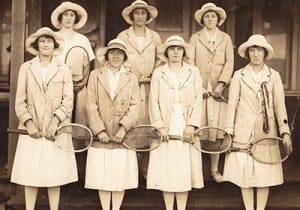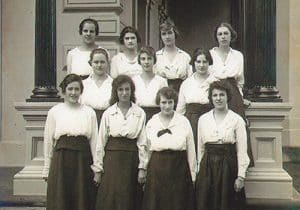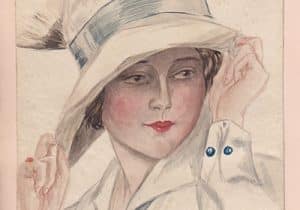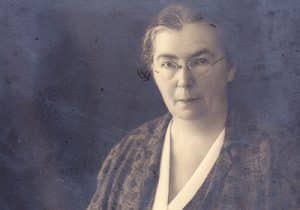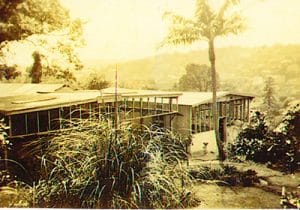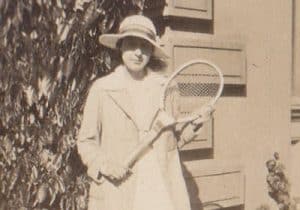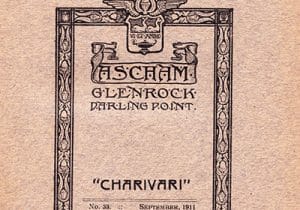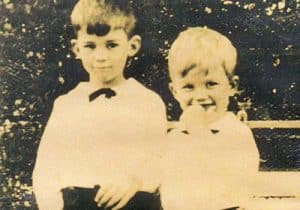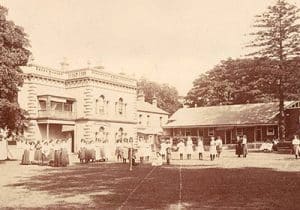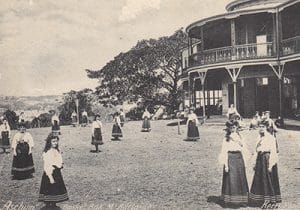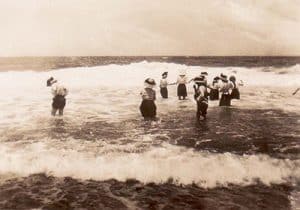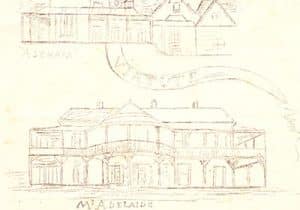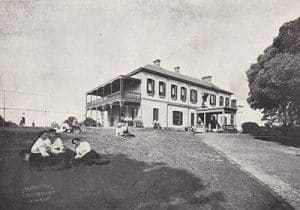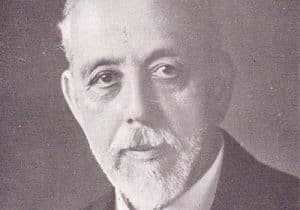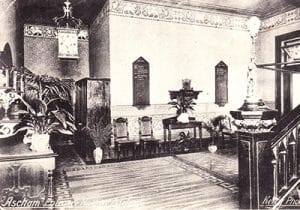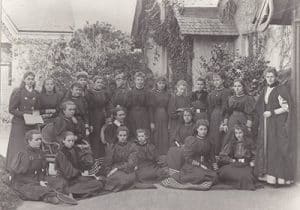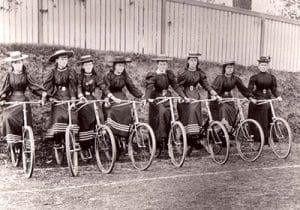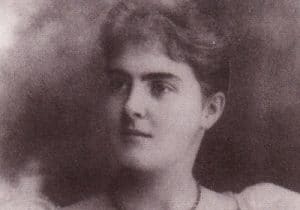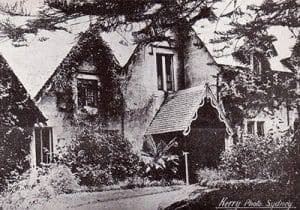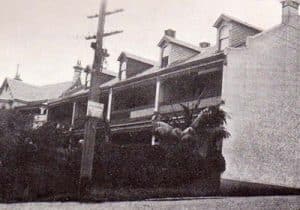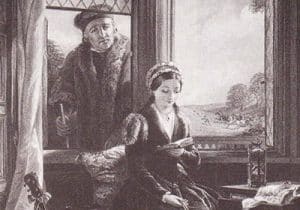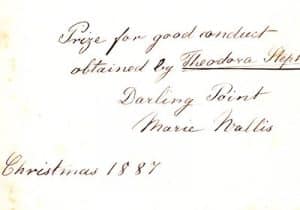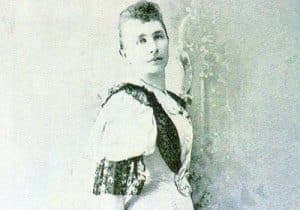Our History
A history with heart and soul
Founded in 1886, Ascham has a respected history, rich with significant events.
Key events in Ascham’s history
21 December, 2023 – today’s breaking of the ground ceremony symbolises the exciting commencement of our transformational Fiona Redevelopment Project!
We are renewing and growing our campus responsibly, with a spirit of continuous improvement.
Each project will advance our vision in stages, with each project's completion unlocking the next.
Since 1922, The Dalton Plan has underpinned how Ascham girls have approached their studies, their careers and their lives.
We celebrate 100 years of the Plan’s principles of independence, responsibility, collaboration and reflection, and the generations of girls who have benefitted from them.
The first Ascham Foundation Giving Day was held, with donations made by the Ascham community over a 24-hour period.
The iconic musical Wicked was staged by the Drama and Music Departments to five packed performances.
Launch of the Ascham Alumni Internship Program, offering younger Ascham Old Girls work-based experience and skills when placed in workplaces of Ascham community members.
After an 18-month build, the new state-of-the-art Margaret Bailey Building was opened for the start of the 2020 school year.
As a result of the COVID-19 pandemic, a Remote Learning Plan was introduced towards the end of Term 1, allowing students and staff to learn, teach and work from home. This continued until all students and staff returned to campus early in Term 2.
1,200 students from Prep to Year 12 danced together during the Smoking Ceremony for National Reconciliation Week for the first time.
Ascham signed a renewable energy Power Purchase Agreement, whereby the School begins to source our energy from a wind farm and a solar farm in NSW.
Ascham Sailing team won State, National and Inter-Dominion titles.
The Project Harmony initiative saw Senior Music students playing to elderly residents of Lulworth House, and according to staff ‘brought a new light’ into lives of the residents.
Visible Wellbeing plan was introduced as an initiative to embed wellbeing into the fabric of the School.
Demolition of the 85-year-old Margaret Bailey Building occurred to make way for a new building bearing the same name.
Our nine values of acceptance, ambition, collaboration, community, courage, kindness, resilience, respect and responsibility, were embedded across the School as a way of instilling in the students a lifelong core values system.
Completion of the new Dining Room and Kitchen, and refurbishment of the Oval.
Seventeen students from Years 7 to 9 attended Ascham’s inaugural Space Camp at the Houston Association for Space and Science Education (HASSE) School in Houston, Texas.
First year of Ascham’s student Sustainability Committee.
Ascham celebrated its 130th Anniversary with a special Founder’s Day Assembly in May, inviting many special guests who have helped shape Ascham School over the decades.
Saturday 20 August 2016 saw the culmination of the School’s 130th birthday celebrations, as well as the official opening of Ascham’s new Centre for the Sciences.
Ms Nell Anderson became the first Old Girl of the School to be appointed to the role of Chair of Ascham School Council (of Governors).
Major fundraising continued throughout the year, launched with a Gala Dinner in May. Building work included the establishment of a state-of-the-art Centre for the Sciences and the remodelling of Duntrim to accommodate new boarding facilities.
For the second time in the School’s history, a male was appointed as the head of the School. Mr Andrew Powell had taught Science at Ascham for 21 years, having started as a Science teacher in 1993, before becoming Deputy Head of Science two years later. He was made a member of the Senior Management Team in 2004 and was appointed to Deputy Head of School in 2012, a position he served in for two years before being appointed as Head of School.
Also in 2014, Personal Development, Health and Physical Education (PDHPE) was offered as an HSC subject.
Boarding has been at the heart of Ascham since 1887 and has been an important part of the School experience for generations of Ascham girls, who have contributed to every area of School life. Ascham boarders of every generation testify to the life-long friendships forged at School.
Ascham purchased neighbouring property Duntrim, which similarly to other School properties had once been the home to a former Ascham family, the Cohens. The acquisition from NSW Health continued to forge the tradition of a strong history between Ascham and its community. For a land-locked school in the middle of a major city, this truly represented a once-in-a-lifetime opportunity for further development at Ascham.
Hillingdon opened its new extension, which included an assembly hall, a library, additional classrooms and a refurbished playground.
Football was introduced as a sport.
Senior School class names were changed from Form to Year.
The Composer-in-Residence program was initiated.
Held on the last day of Term 2, the reintroduction of Founder’s Day was in keeping with Mr Carter’s introduction of Founder’s Day, in 1904 on June 6, Miss Wallis’s birthday.
Start of the Writer-in-Residence program in Senior School and first Visual Arts Department tour to New York.
Dance was introduced as an official sport.
Miss Preedy had been one of the Deputy Heads at St Paul’s Girls’ School in London before taking up the role of Headmistress at Ascham.
A Year 12 lecture series was introduced to supplement students’ academic studies and develop their general knowledge.
Hats were reintroduced to the school uniform.
After 31 years as Headmistress, Mrs Danziger retired as Headmistress of Ascham. Chinese and Drama were introduced as HSC subjects during Mrs Danziger’s final year.
Harriet Gee (1998) became the School’s second Rhodes Scholar.
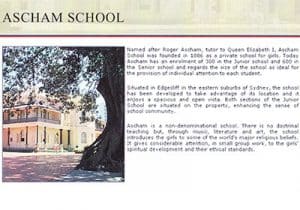
In 1998, the Ascham Old Girls’ Union held an appeal and donated new gates to match the original gates located further up the driveway, near the Dower House.
The year the School celebrated 75 years of the Dalton Plan, it also celebrated Mrs Danziger’s Silver Jubilee at Ascham.
The School completed extensions to Hillingdon and its refurbished Library named for Helen Grant, former Head of Hillingdon. The extensions to Hillingdon were designed by Ascham Old Girl, Angela Kent (1978).
Old Girl, Elizabeth Stone (1990), became Ascham’s first Rhodes Scholar.
Another new sport introduced was Rowing, which Ascham girls had first enjoyed in the 1890s under Miss Wallis when they had participated in early morning rows around Garden Island.
Meanwhile, the more established sports continued to compete internationally, with Ascham Hockey touring Argentina and Chile.
The Patricia Johnston Wing, new kitchen and boarders’ dining room opened, named after former Geography teacher and Senior Mistress Miss Pat Johnston.
In keeping with its overseas excursions, Ascham produced its first foreign language production in several years, the first in the Packer Theatre, Der Gute Mensch von Sezuan. The following year, Ascham hosted two teachers from the Beijing Experimental Middle School to teach the students Mandarin and Chinese culture.
At a local level, the inaugural Year 10 Outward Bound/Dalton Goes Bush camp was held.
The Ascham Foundation launched the Endowment Fund to enhance teaching salaries and to extend ‘academic, sporting and musical offerings without adding to school fees’.
Performing arts continued to grow and new student positions of Leader of Orchestra and Leader of Choir were introduced, while Dance was developed within the School.
Ascham expanded its overseas program, which included a Classics tour to Egypt, Greece and Italy; German and Japanese language students studying abroad; and Blazey Best and Cassy Diamond participating in the Choral Summer School at Eton College.
Ascham has had a strong tradition in the performing arts and can trace Music and Drama back to its earliest days. In keeping with its increasing number of School performances, the opening of the Packer Theatre heralded a new era of performance at the School.
First year of exchange program with St Paul’s Girls School, London.
The Peter Adams Music School opened following renovations and the creation of five classrooms, a movement room and a theatrette. Music has played an integral part in an Ascham education since the School’s early years under Miss Wallis and has grown to include a vital program incorporating both curricular and co-curricular activities.
The Junior School Library was named after Norah Street who served on the Council from 1951–1969 and remained a Company Member until 1979.
The students performed in a record three musicals during the year, including co-productions with Cranbrook School and Sydney Grammar School.
Ascham French students participated in an overseas excursion to Noumea.
Boarders numbered just under 180 and new renovations in two boarding houses, Glenrock and Mac House, over the next year resulted in the boarders experiencing ‘luxury accommodation’, a contrast to dormitory life before World War II.
A film was made about the School, featuring the girls, to promote the Foundation and its goals.
Classical studies had been offered in varying forms throughout the School’s history, but in the 1970s a new Classical Studies course was introduced in Grade 6 and continued into the Senior School. Classics became a strong department at Ascham for several decades and extended into study tours abroad and Drama performances.
Mrs Rowena Danziger became the only Ascham Headmistress to be appointed from the role of Deputy Headmistress. With a Bachelor of Arts from ANU and Teachers’ College Diploma from Queensland Teachers’ Training College, Mrs Danziger had taught at both primary and secondary level, and had held senior teaching and advisory positions, including Chairman of the History Department from 1966–1971 at Milton Academy in Massachusetts.
A new Senior School Library and Science laboratories were opened.
Hats became an optional part of the school uniform.
Curriculum changes and innovations
Mrs Danziger established the Department of Modern Languages which offered French, German, Spanish and Indonesian. Asian Studies was also introduced and a Drama program established throughout the School.
Holmwood became Ascham’s fourth boarding house, accommodating dormitories upstairs and the School hospital downstairs, while Wallis House became the Bursar’s office. Boarders were allowed to wear jeans and pants at the weekend for the first time and ‘non-uniform’ when going on leave.
Miss Roberts retired at the end of the year and was succeeded by her deputy, Mrs Rowena Danziger.
Two new Houses, Street and Whitehead, were added to the existing four. They were named respectively after former long-serving Chairman of Council, Dr TR Street, and former Headmistress, Miss Dorothy Whitehead.
Softball was introduced for the first time, with 70 girls trying out for two teams.
Designed by Herbert Wardell, Hillingdon was built in 1909 by Sir John Harvey and named after the village in England where Sir John’s father was rector. It is located on Octagon Road, diagonally opposite Macintosh House.
Now called Ascham Preparatory School or ‘Prep’, Ascham’s pre-school was moved to its current location, ‘a modern bungalow in St Mark’s Road’, next door to Raine House.
Following Miss Whitehead’s retirement, Miss Merrilie Roberts became Ascham’s sixth Headmistress. With a background in Mathematics, Miss Roberts had worked with de Havilland Aircraft during the War and, before coming to Ascham, had been Deputy Headmistress at SCEGGS Moss Vale and Headmistress at Newcastle Girls’ Grammar School. At the time of her appointment, there were 650 girls on the School roll.
Yo-Merry was designed by Halligan and Wilton in the Arts and Crafts style for Claude Hill Reading and his family in 1909. It was purchased by Ascham from Mrs Frank Hill and renamed Raine House, after Mr Edmund Ralston Raine, Chairman of Council from 1954–1961. It was opened the following year to house additional boarders and to teach a stream of Senior girls in homecrafts courses.
The first stage of the TM Scott Science block comprised a single-storey building housing Science laboratories. The same year, a record number of Ascham School leavers enrolled in Science and Physiotherapy and related disciplines at university.
The Hall provided a new venue for the increased number of Music and Drama performances at Ascham. Music teacher Kenneth Robins composed a new School song entitled With Heart and Soul to commemorate. It is Ascham’s third School song, the first having been composed by Canon Kemmis of St Mark’s Church during Miss Wallis’s era, and the second by Mr Carter before World War I. The new School song and musical score were published in Charivari the following year.
In 1956, pre-school aged students, three to five years of age, were admitted to Ascham for the first time. The Kindergarten was initially housed in the Preparatory School building, after the Preparatory School was moved to downstairs classrooms in Fiona.
After trialling the sports Houses at the 1953 athletics carnival, the School Houses Bailey, Carter, Glenrock and Wallis were formally introduced for ‘sporting and recreational activities’. The Houses have continued to play an important part in fostering School spirit through sporting and co-curricular competitions.
The Ascham Association marked the official partnership of the parent body with the School, although in reality the Ascham parents had been an important part of the School since its foundation.
The Junior School Library was opened by Miss Gladys Lister, children’s author.
In 1952, a plaque was unveiled to commemorate Thomas Whistler Smith’s initials, carved in a rock in 1836, when he was 12 years old. Smith was the son of the original landowner, Thomas Smith, and later built the Dower House in about 1850 after he inherited Glenrock Cottage. Today, the initials are very weathered but can still just be made out to the top left hand side of the plaque, which is located near the Dower House.
Mayrah was the former home of Dr Ludowici. Wallis House was initially the School hospital, later providing additional accommodation for the boarders. It was completely rebuilt in 2008.
The school uniform was ‘modernised’ as the box-pleat tunics first introduced in the 1920s were replaced, and ‘chic berets’ were introduced in place of the felt hats.
Senior School students enjoyed their first School dance in the ballroom of Fiona.
Miss Whitehead became the first Headmistress to live in the Dower House. Located at the heart of the School between Fiona and Glenrock, it has been the Head’s residence for over 65 years. Prior to this, previous Heads lived in Glenrock.
Miss Dorothy Whitehead was educated at the University of Melbourne and served in the Women’s Army during the War, rising to the rank of Temporary Major and Assistant Controller of the Australian Women’s Army Service (AWAS). As Headmistress she embraced the Dalton Plan, and was an excellent administrator.
Middle School students (upper Junior School classes) moved into Fiona for the first time.
Dr Rayward studied at the University of Melbourne and had additional qualifications from universities in Paris and Munich. She had taught at various schools in Victoria and NSW before becoming Headmistress at Ascham.
The Amy Molineaux Memorial English Essay Prize, established in 1910, was published in the School magazine for the first time on the topic, ‘Democracy as a Form of Government’.
The Old Girls ran a Second-Hand Uniform Department to help with rationing and Charivari printed a single issue for the year due to paper rationing. Many former students had joined up and were serving at home and abroad, such as former Ascham students Sheila Booth and Amber Bushell who served as Voluntary Aid Detachment (VAD) members in the Middle East, pictured here on leave in Lebanon.
Some of the Junior boarders remained on at Redleaf, Blackheath, for an extra term into 1943.
The last boys at Ascham were recorded as enrolling in 1943.
For the first time since its establishment in 1915, the Preparatory School had its own spacious purpose-built classrooms. The modern building with its flat, scalloped roof is still standing today and now houses the Music Department.
Mr Carter visited the School 25 years after his retirement and gave an address to the girls. His essay ‘A Little National Introspection’ was published in Charivari and reflects his earlier essays on the nature of war, published in Charivari during World War I. Mr Carter died the year following his school visit.
The boarders enjoyed their annual picnic to the Royal National Park at the end of the year, before the deprivations of the War years became more pronounced.
Old Girl Kitty (Mackay) Hodgson became Ascham’s first Olympian when she attended the Berlin Olympics with the Australian swimming team, competing in 100 metres Freestyle and Backstroke. She published an account of her experience in Charivari, describing competing against stronger, faster teams as well as the atmosphere in the Berlin Olympic Stadium during the opening ceremony.
Macintosh House was opened to accommodate the Junior boarders, marking the first time they were housed separately to the Senior boarders. ‘Mac’ House was home to the Junior boarders until the late 1990s.
In 1929 Miss Bailey bought neighbouring property, The Knoll, from the Littlejohn family, who had built it in 1914, on land purchased from the Carters. In 1930 Miss Bailey renamed the property Macintosh House after her close friend and colleague, Mrs Annie Macintosh.
Ten years after the first Ascham candidate sat the Leaving Certificate, and seven years after the introduction of the Dalton Plan, the number of Intermediate and Leaving Certificate candidates had risen dramatically.
The boarders returned from holidays and were delighted to discover modern extensions made to Glenrock and to ‘Dormitory number 8’, Ascham’s first major post-World War I building project.
Miss Wilsie Fergusson joined the staff as Senior History Mistress and Senior Mistress of Ascham, later acting as Headmistress on several occasions during absences of headmistresses. She retired in 1966, after 40 years’ service at Ascham.
Mrs Annie Macintosh, a young war widow who had been on the teaching staff since 1915, was Miss Bailey’s colleague, friend and confidante. She died prematurely in 1925 and her portrait was the first photograph to be published in Charivari. Miss Bailey expressed her wish to create a memorial for Mrs Macintosh, and later named the Junior Boarding House after her and endowed the Senior and Junior Boarding Prizes in her name.
Despite innovations to boarding life such as the installation of electricity and hot water in the dormitories, boarding life remained rudimentary during the 1920s and the years beyond.
Following Miss Bailey’s return from her overseas study tour, the Dalton Plan was expanded upon and introduced to all Senior and Upper Primary Forms.
There was a change in the uniform, from a navy blue skirt and white blouse, to a khaki pleated tunic.
Miss Bailey introduced a modified version of the Dalton Plan, with the purpose of preparing girls for university and life beyond Ascham School. At the end of the year, she embarked on a study tour of the USA and England to study the educational methods of the Dalton School in New York and Streatham School in England.
Ascham won the Tildesley Tennis Shield for the first time.
Numbers for the Intermediate and Leaving Certificates were slowly on the increase, and the total number of students at the School reached a record 150. Lois Linsley had been the first and only Ascham candidate to sit for the Leaving Certificate the previous year in 1919, but the aftermath of World War I brought with it a change in attitude in Ascham parents about the value of tertiary education for their daughters.
News of the Armistice was announced on 11 November, signalling the end of World War I. It also heralded the birth of the modern new woman as shown in this illustration by Bertha Sloane, taken from Lena Lamrock’s autograph book. Encouraged by Ascham art teacher Albert Collins, Bertha went on to have a career as a graphic artist, designing covers for fashion magazines.
The number of girls on the School roll reached 100 again after having dropped during World War I from the 129 girls recorded in 1911.
When the War showed little sign of abating, it became apparent that Ascham could not continue to support two principals. At the start of 1916, Miss Kathleen Gilman Jones left Ascham to become Headmistress at CEGGS Melbourne, leaving Miss Bailey in sole charge of the School.
Although part-time Kindergarten classes had been offered as early as 1893, in 1915 Miss Bailey and Miss Gilman Jones made the decision to admit younger students full time. Prior to this time, no provision had been made to students unable to read before coming to Ascham. The first Kindergarten was housed in a former glasshouse in the garden.
Initially only worn by the 1sts Tennis team, Mr Carter conceded to the girls’ requests for a blazer, despite his original concerns that, in his opinion, it made them look like suffragettes. Girls were warned that if they were caught with their hands in their blazer pockets, their pockets would be stitched up!
Mr Carter and art teacher Albert Collins designed the crest for the first issue of Charivari to appear with a cover in September 1911. As described in the December 1911 issue of Charivari, the dolphins denote ‘energy’ and ‘persistence’, the wings denote ‘aspiration’ and ‘ambition’, and the lamp denotes ‘learning’. The motto ‘Vi et Animo’, ‘With heart and soul’, was taken from the McCulloch family crest on the door of Delamere, the former site of Ascham.
This year, the number of girls enrolled at Ascham was 129.
Lloyd Wade is recorded as the first boy admitted to the School. A total of 123 boys up to the age of seven are known to have attended Ascham from 1910 to the middle of World War II, the majority during the 1920s and 1930s. Many lived close to the School, had sisters who attended Ascham or were the sons of Old Girls. Richard and Edward Littlejohn lived at The Knoll, later Ascham’s Macintosh House, and attended from 1921 to 1922.
For over 20 years, the School had been accommodated in a series of rented properties. The Carters sought to secure a permanent location for Ascham and bought Glenrock in Darling Point, a fine Italianate house built by John Marks in 1876, set on six acres of land. The land was originally part of land granted to Thomas Smith in the 1830s and the house was built on the site of Glenrock Cottage. The Carters also built new classrooms and an assembly hall, which were opened by Lady Poore on 26 August.
Teacher Miss Whitfeld recorded an early inter-school sport competition, a tennis match against Abbotsleigh in 1897, which Ascham won. However, it was Mr Carter who really encouraged inter-school competitions from 1903. Ascham played Abbotsleigh, Kambala and SCEGGS in Association Cup tennis matches, against the boys’ schools in cricket and Redlands in basketball. The first known School houses were called the ‘Blues’ and the ‘Reds’, and the first recorded Athletics carnival was held in 1907.
The girls and teachers at Ascham have enjoyed swimming in the ocean and harbour since the mid-1890s. The School’s first official swimming carnival marked the beginning of competitive swimming for Ascham girls and featured events such as the Boarders’ race, the Day Girls’ race, Diving, and the Egg and Spoon race.
In mid-1902, during the last few months of Miss Wallis’s time as Principal, three girls—Bessie Bundock, Cecily Lingen and Kitty Hay—established a newsletter, entitled Charivari, which loosely means a medley or hubbub of noise or activity. The oldest extant copy, dated December 1902, features drawings of both Delamere and Mount Adelaide on the coversheet. With Mr Carter’s encouragement, Charivari flourished and the first printed copy appeared in 1903. It remains the School’s annual magazine today.
In the same year Mr and Mrs Carter leased Mount Adelaide, diagonally across the road from Ascham, to house the boarders. The Carters’ three sons and two daughters, Beatrice and Ursula, who also attended Ascham, lived with them. The extensive grounds were put to good use for sporting activities, outdoor nature study classes and garden parties.
Mr Herbert Carter was educated at Jesus College, Cambridge, and shortly after his graduation and marriage, moved to Australia. He was employed at Sydney Grammar School as Senior Mathematics Master before buying Ascham with his wife, Antoinette.
The foundation of the AOGU was one of the many Ascham traditions established by Miss Wallis. The Old Girls’ Prize, Ascham’s oldest continuous prize and oldest Honour Board Prize, was first awarded three years later in 1902. The Honour Board was the first to be hung at Ascham, along with the Prefects’ Honour Board.
Miss Madeline Whitfeld, a graduate of Sydney University, was employed as a teacher and housemistress from 1896–1898. Miss Whitfeld’s letters to her sister give an insight into life at a Victorian era boarding school which, far from being austere and strict, shows Ascham as a bustling school, filled with academic endeavour, sport and co-curricular activities; not dissimilar to Ascham today.
The first Ascham uniform comprised a navy blue skirt with beige, then later white stripes, white blouse and matching blue jacket with white stripes on the cuffs. A straw hat, later replaced by a boater with a blue ribbon, completed the outfit. The uniform was initially worn by the boarders but was eventually introduced for all the students, particularly while playing sport. This version of the uniform was eventually phased out in 1914 and replaced by a navy blue skirt or tunic and white blouse.
The external examinations in New South Wales in the 19th and early 20th centuries were called the Junior and Senior University examinations, equivalent to the former School Certificate and the current Higher School Certificate. Ethel Lane Latham attained the highest marks of any girl in the State for both the Junior examination in 1894 and the Senior examination in 1895, becoming the first Ascham student to win the Fairfax Medal.
As the School numbers grew, Miss Wallis relocated the School to Delamere, an attractive Victorian gothic house with extensive gardens and a tennis court in nearby Goomerah Crescent. A second house, Queenscliff, situated around the corner, was rented to accommodate the boarders.
After the success of both the day school and boarding school, Miss Wallis rented a third terrace house in Marathon Road to house Junior School students.
Miss Wallis named her school after Elizabeth I’s tutor, Sir Roger Ascham. Author of The Scolemaster, Sir Roger Ascham was known for his enlightened educational philosophy.
The School was initially opened in the end terrace closest to Marathon Road. After the introduction of boarders, Miss Wallis also rented the terrace next door.
The first Prizegiving was held this year and the earliest existing book prize was awarded to one of Ascham’s first nine girls, Theodora Stephen, for ‘good conduct’.
Miss Marie Wallis migrated to Sydney from Barth, Germany, in about 1884. She worked as a governess in Sydney for various families before establishing her school in Marathon Road, Darling Point, with nine students.
